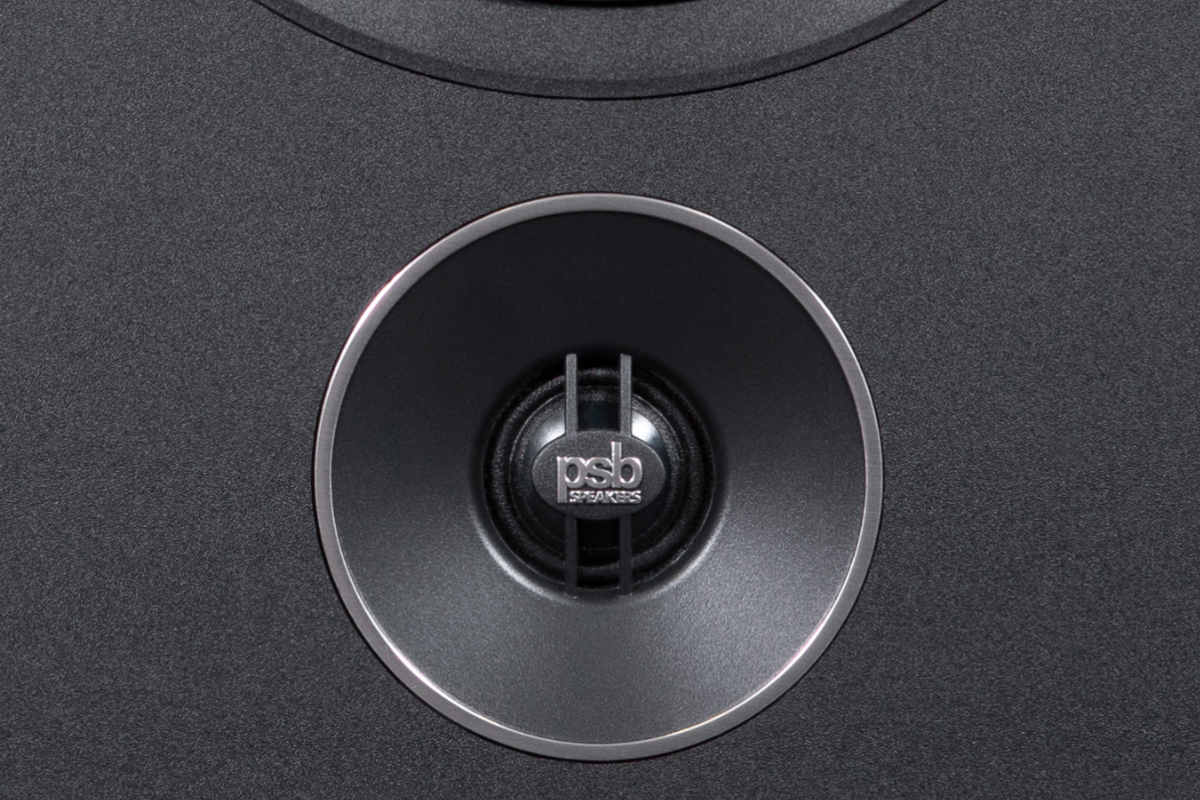 I didn’t expect to be writing this review -- at least, not now. As I mentioned a month ago, in my feature article “A Perfect Pair,” when I read PSB’s announcement of their new Alpha AM3 and Alpha AM5 powered speakers, I immediately requested for review a pair of AM5s. I was told that samples would be shipped to me that very week -- only to hear, a few days later, that review samples weren’t available, due to robust initial orders and pandemic-related product shortages. When PSB offered to supply the smaller AM3s, I gladly accepted.
I didn’t expect to be writing this review -- at least, not now. As I mentioned a month ago, in my feature article “A Perfect Pair,” when I read PSB’s announcement of their new Alpha AM3 and Alpha AM5 powered speakers, I immediately requested for review a pair of AM5s. I was told that samples would be shipped to me that very week -- only to hear, a few days later, that review samples weren’t available, due to robust initial orders and pandemic-related product shortages. When PSB offered to supply the smaller AM3s, I gladly accepted.
Still, it was the Alpha AM5 I was most eager to review. The Alpha AM3 ($399/pair, all prices USD) and AM5 ($599/pair) are powered versions of, respectively, PSB’s Alpha P3 ($219/pair) and P5 ($399/pair) passive minimonitors. The Alpha P5 received a Reviewers’ Choice Award when Hans Wetzel reviewed it for SoundStage! Access in March 2019, a SoundStage! Network 2019 Product of the Year award for exceptional value, and was named a Recommended Reference Component on SoundStage! Hi-Fi.
So I was mightily pleased when PSB informed me, in early November, that they’d managed to scare up a pair of AM5s and would be sending review samples of the AM3 and AM5 within the week. Back to Plan A: reviewing the AM5 first, and following up with a review of the AM3 in early 2021.
Outside . . .
Each Alpha AM5 enclosure measures 11.4″H x 6.75″W x 9.5″D -- the same as the Alpha P5. The primary, left speaker, which houses the 50Wpc class-D amp that powers both channels, weighs 11.3 pounds. The secondary, right speaker weighs 10.2 pounds -- the same as each speaker of a pair of Alpha P5s.
Like the P5, the AM5 has a cabinet of 0.5″-thick MDF wrapped in vinyl, a 1″-thick front baffle, and comes with a magnetically attached metal grille. In a phone interview, PSB founder and chief designer Paul Barton confirmed that the grille is acoustically transparent. But whereas the P5 is available in a finish of simulated black ash or walnut, the AM5 is offered only in matte finishes of black or white. My review sample, in matte black, had a slightly pebbled texture.
The driver complement and passive crossover of the Alpha P5 and Alpha AM5 are the same: a 5.25″ polypropylene midrange-woofer with rubber surround and steel basket, crossed over at 2.5kHz to a 0.75″ ferrofluid-damped aluminum-dome tweeter with neodymium magnet. As he’s done in other speaker models, Barton places the tweeter below the midrange-woofer. As he explained to me, with the speaker’s Linkwitz-Riley 24dB/octave crossover network, this arrangement ensures that the outputs of the two drivers remain in phase in the crossover region whether the listener is sitting or standing. The AM5’s specified frequency response is the same as the P5’s: 55Hz-20kHz, ±3dB.
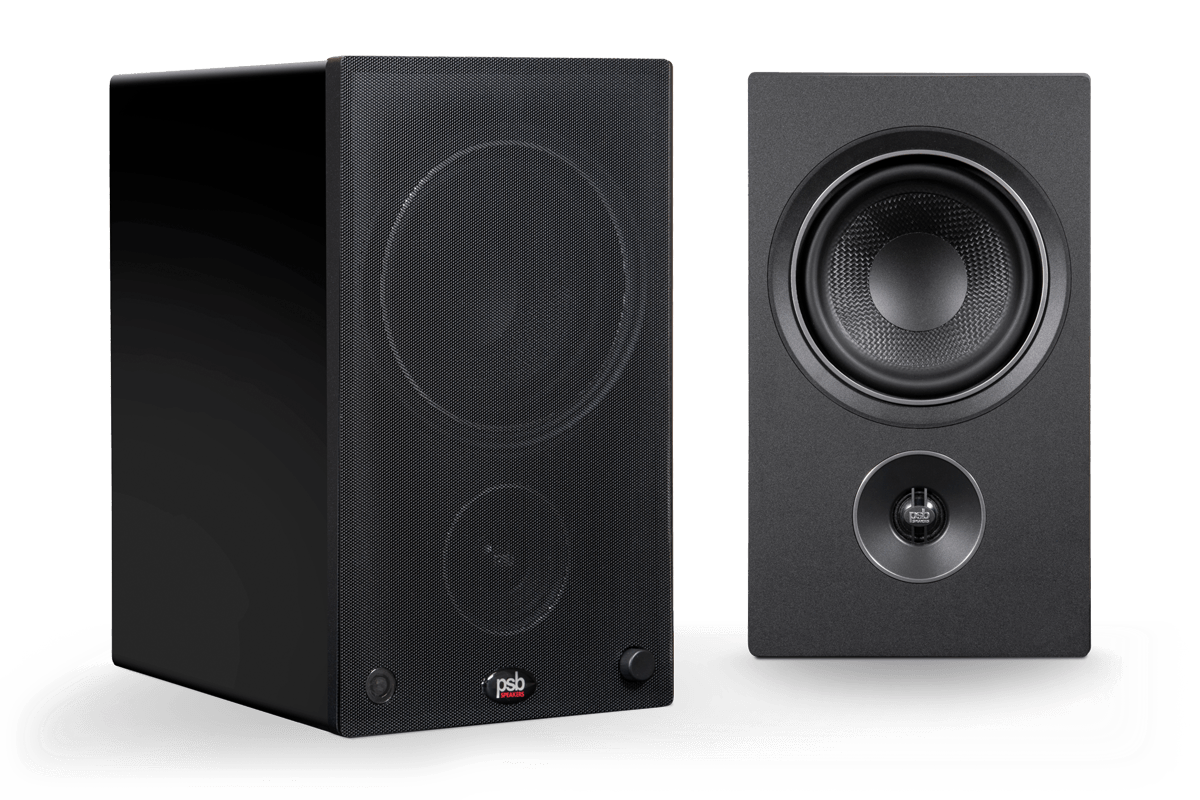
Readers who want to delve more deeply into the AM5’s acoustical design should check out Hans Wetzel’s review of the Alpha P5 on SoundStage! Access. Here, I’ll focus more on the speaker’s electronics.
On the left side of the rear panel of the primary speaker is a pair of RCA jacks for connecting a turntable, and below them a ground post. On the right is a stereo line-level auxiliary input (3.5mm), and below that an optical S/PDIF input (TosLink), a Micro-USB port for connecting a computer, a subwoofer output jack (RCA), and a USB Type-A port for charging external devices. Running along the bottom of the rear panel, from left to right, are a jack for the 24V DC power adapter, a Bluetooth pairing button, and a pair of binding posts for connecting the right speaker. Below the panel is the port.
The front panel of the primary speaker has a knob in the lower right corner; to its left is a status LED. Turn the knob to adjust volume; press it to cycle through the inputs. In the lower left corner is an IR sensor for the supplied remote control.
That remote is made of black plastic, with good-size, well-labeled buttons. On the top are power on/off and Bluetooth pairing buttons; below these are a cursor pad with volume-up/down functions at top and bottom, source select buttons at left and right, and a central mute button. Below all that are buttons for switching in a connected subwoofer, and for changing DSP modes (see below), and below those are up/down buttons for treble and bass.
. . . and inside
The Alpha AM5 supports Qualcomm’s aptX Bluetooth codec, but not aptX HD. The maximum resolution of its USB input is 24-bit/48kHz PCM, and 24/192 for the optical input. When the subwoofer output is enabled using the Sub button on the remote, the powered Alphas implement a low-pass filter for the sub and a high-pass filter for the main speakers, both centered on 80Hz. The high-pass filter means that the powered Alphas don’t have to produce deep bass -- a welcome feature that many powered speakers don’t offer.
Rather than a third-party, off-the-shelf phono preamp, Barton told me, the AM5s employ a high-precision phono stage made by NAD. (Both companies, along with Bluesound, are owned by the Lenbrook Group.) During my listening, I was impressed by the quietness of this phono stage. Through the phono input, with the volume set to a moderately high level but nothing playing, I could hear only very faint hiss with my ear 1′ from one AM5’s tweeter, and none at all at my listening chair 5′ away.
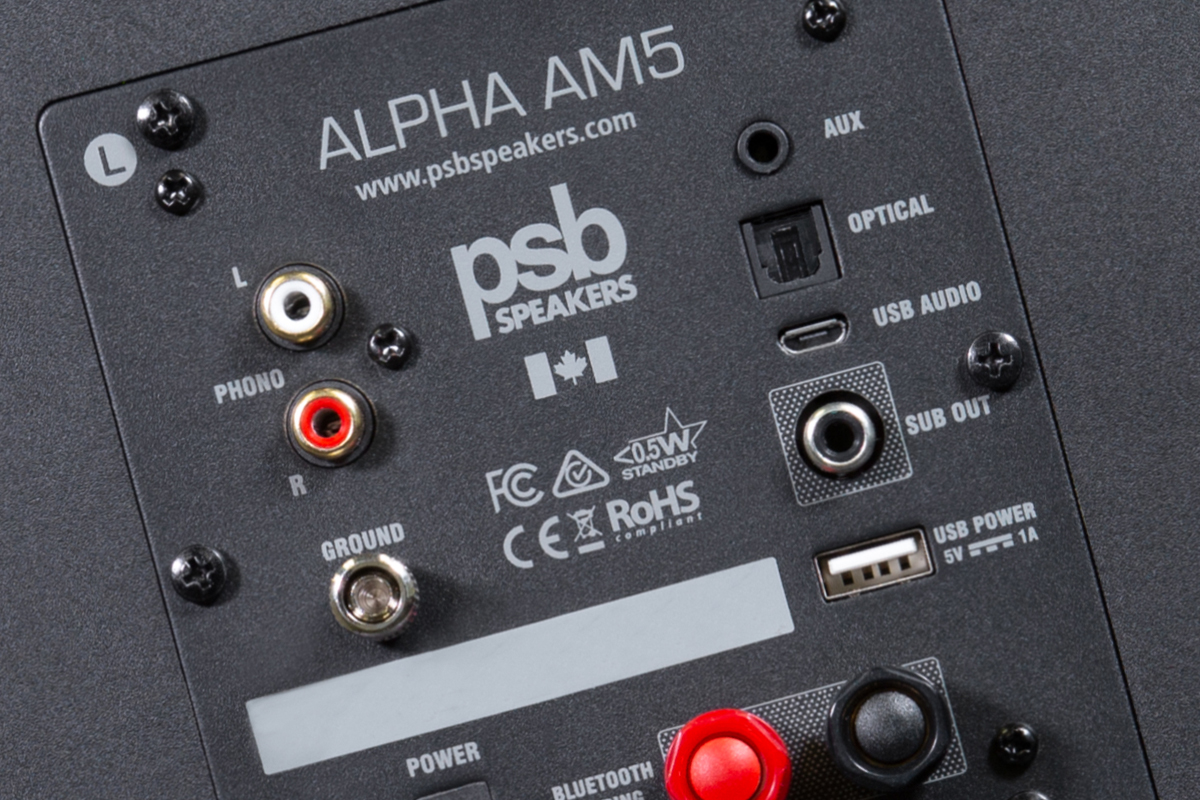
Unusually for a powered speaker, the AM5 (and AM3) applies digital signal processing (DSP) before amplification -- analog signals are first digitized. In addition to implementing the subwoofer crossover, the DSP executes algorithms that PSB has licensed from Waves Audio Ltd., of Tel Aviv, Israel. One of these algorithms, MaxxBass, is always running except when the subwoofer output is selected. MaxxBass analyzes bass content below a crossover frequency set by the designer (38Hz in the case of the AM5), and creates a series of harmonics based on that content. MaxxBass applies a high-pass filter to remove bass below the crossover frequency, then adds the harmonic series, exploiting a known psychoacoustic phenomenon in which listeners perceive missing fundamental bass frequencies based on harmonics of those frequencies.
Waves claims that MaxxBass can extend the perceived LF response from a speaker by as much as 1.5 octaves. They also say that MaxxBass preserves, as much as possible, the dynamics and loudness of the original bass. Had Barton not told me that the powered Alphas employed this algorithm, I’d never have been aware that it was running, or that the little AM5s weren’t actually reproducing all the low bass I thought I was hearing. All I knew was that I was hearing bass that sounded surprisingly robust for so small a pair of speakers.
Playing 40Hz and 200Hz sinewave test tones at the same level on the volume control, and checking their levels with a sound-pressure-level (SPL) meter showed that the AM5s’ output at the two frequencies was the same 80dB. The 40Hz tone had some mildly buzzy overlay -- an artifact of the MaxxBass processing, or an indication of the limits of the 5.25″ driver? No way to tell. What’s important is that I heard no such artifacts when I listened to music or film or video soundtracks.
The Alpha AM5s include two other Waves plug-ins: MaxxDialog and Maxx3D, which can be applied singly or together by pressing the Mode button on the remote control. Intended for playback of video content, MaxxDialog identifies and boosts center-channel dialog information, improving intelligibility. Maxx3D expands the stereo soundstage and the sweet spot, and can be used for both movies and music.
The Mode button lets you cycle through these effects, your selection confirmed by a quick flash of the status LED on the speaker’s baffle. The LED doesn’t flash when the default mode, Stereo (no processing), is selected. WideSound mode enables Maxx3D, and is indicated by a quick green flash of the LED. Dialogue mode (quick amber flash) activates MaxxDialog. WideSound Plus (flashing blue) enables MaxxDialog and Maxx3D.
I played a little with these effects. With orchestral music, WideSound extended the soundstage several feet past the speakers’ outer side panels, but made aural images slightly more amorphous. I also experienced the mild pressure in my ears that often accompanies this kind of processing. The effect itself wasn’t to my taste, but I can imagine lots of listeners really enjoying it. I did almost all of my listening in Stereo mode.
The AM5s’ Bass and Treble tone controls both have low Q values, Barton told me, and so are gentle in their effects. The shelving frequency of the Bass control is unusually low -- just over 100Hz -- so that it won’t interfere with the fundamentals of male voices. Still, the Bass contour can be helpful in taming boom when the speaker is placed close to the wall behind it, as it will be in many tabletop applications. The shelving frequency of the Treble filter is 4kHz -- far higher than the fundamental of any human voice, and above the fundamental frequencies of almost all musical instruments.
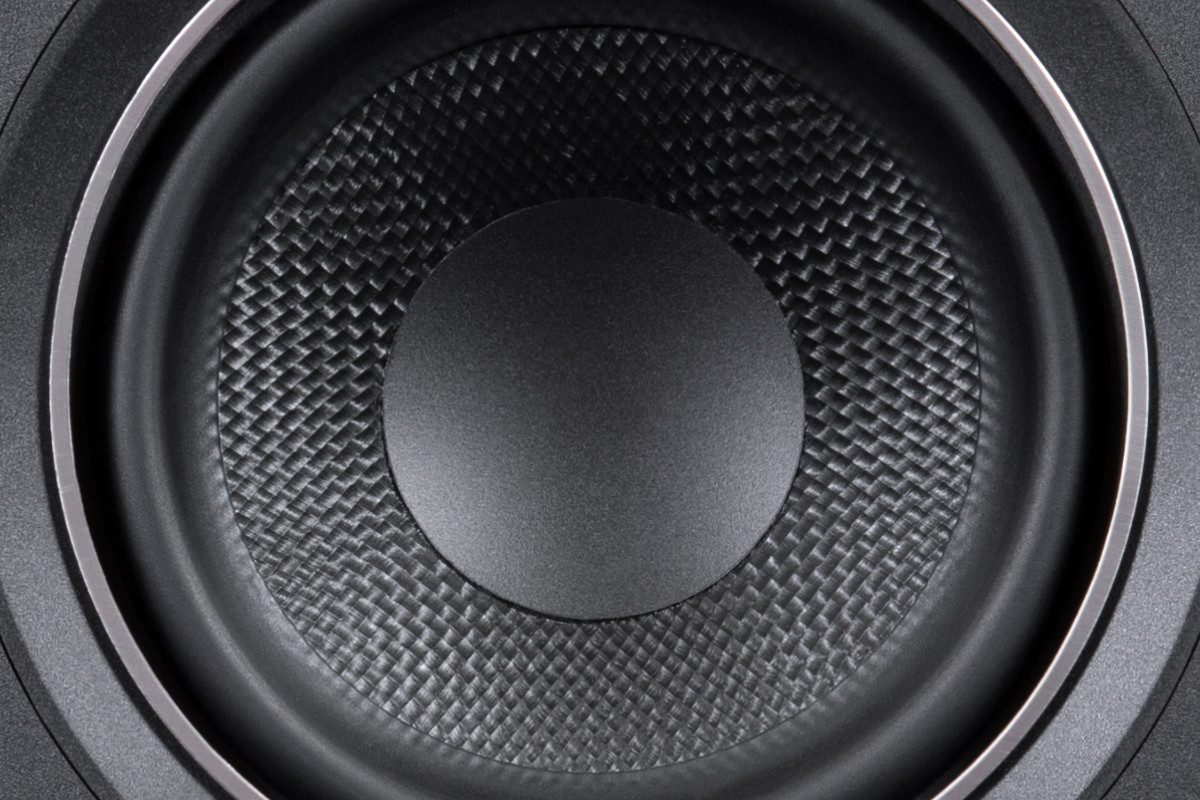
Both tone controls are in their middle, flat positions when the AM5s are first turned on. During adjustment, the status LED briefly flashes red to indicate the flat position, and solid red to indicate the minimum or maximum settings. The remote controls for other powered speakers I’ve reviewed, including Totem Acoustic’s Kin Play ($1100/pair) and Triangle’s Elara LN01A ($859/pair), have a Reset button that restores the tone controls to their flat settings; it would be nice if the Alphas had that feature.
Setup
For this review, I placed the Alpha AM5s on IsoAcoustics ISO-155 desktop speaker stands ($109.99/pair), at either end of the credenza in our basement family room. The speakers were 4′ apart and 5′ from my listening chair; their rear panels were 1′ from the wall behind them. This room is where I usually evaluate small powered and active speakers, reasoning that this space is typical of the settings where speakers like these will be used.
I used three sources for my listening tests. I streamed music from my LG G7 ThinQ smartphone via Bluetooth. For digital file playback, I used Audirvana Plus 3.2.20 software running on my early 2015 MacBook Pro, which I connected to the AM5’s Micro-USB port with a generic cable. To play LPs, I used a Pro-Ject Debut Carbon turntable with pre-mounted Ortofon 2M Red cartridge ($449).
Music
I began by streaming, from my LG smartphone via Bluetooth, a high-resolution download of “Into the Mystic,” from the 2013 remastering of Van Morrison’s Moondance (24-bit/192kHz FLAC, Warner Bros.). I loved the way the PSBs reproduced the two acoustic guitars at the beginning: John Platania’s lead at left, Morrison slapping out chords at right. The Alpha AM5s nicely differentiated the two instruments, Morrison’s rhythm guitar having a more steely and percussive quality, and Platania’s a warmer, woodier tone. Both instruments occupied very specific locations on the soundstage.
John Klingberg’s electric bass, at right center on the soundstage, sounded big and robust, providing a wonderful foundation to the song. But I found it a touch too prominent -- whenever Klingberg played, the sound was a bit boomy. That wasn’t surprising, given that the AM5s’ rear panels were only 1′ from the wall behind them. Turning down the Bass control two notches eliminated the boom and improved the bass definition without making the sound at all lean -- a testament to how well judged the Alphas’ tone controls are. I left the Bass control at that setting for the rest of my listening.
Morrison’s voice, at center stage, a little in front of and to the left of Klingberg’s bass, sounded wonderful. At the beginning of the bridge, when he belts out “I want to rock your gypsy soul,” the AM5s obliged, tracking his expressive singing perfectly. If I played this track really loud, his voice acquired a slightly hard edge -- at lower volumes, that wasn’t a problem.
The instrumental choruses -- with Jack Schroer joining on alto sax, Collin Tilton on tenor sax, Jeff Labes on piano, and Morrison on tambourine -- just swung, each instrument having a well-defined position on the stage.
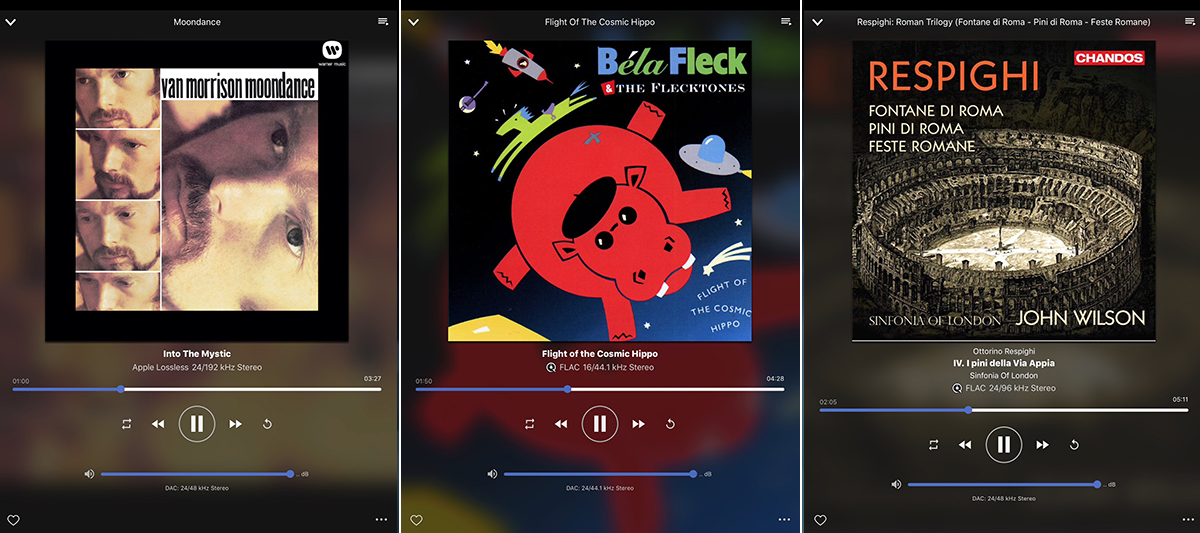
I then played the same track from my MacBook Pro through the AM5s’ USB input, for which Audirvana downsampled the stream to 24/48. There was a tad less digital glare and the soundstage seemed more filled in, the guitars slightly fuller-bodied. The transients of the steel strings were just as fast, but less edgy and spotlit, and more naturally integrated with the resonance of the guitar bodies. In Morrison’s singing, there seemed to be more gradations between loud and soft. Not night-and-day differences, but worthwhile ones.
When I then played the same recording, this time from a 180gm vinyl edition of that same 2013 remastering (LP, Warner Bros. 81227950354), the sound was a little warmer and more rounded, but the dynamics were slightly more compressed, which meant that Morrison’s singing wasn’t quite as expressive. Image specificity was slightly vaguer, and acoustic-guitar transients were a bit more muted. In the instrumental choruses, the saxes had not quite as much bite. I preferred the greater clarity of the digital version, but it was clear that I was listening to different versions of the same recording -- regardless of the input, analog or digital, the AM5s did justice to this track.
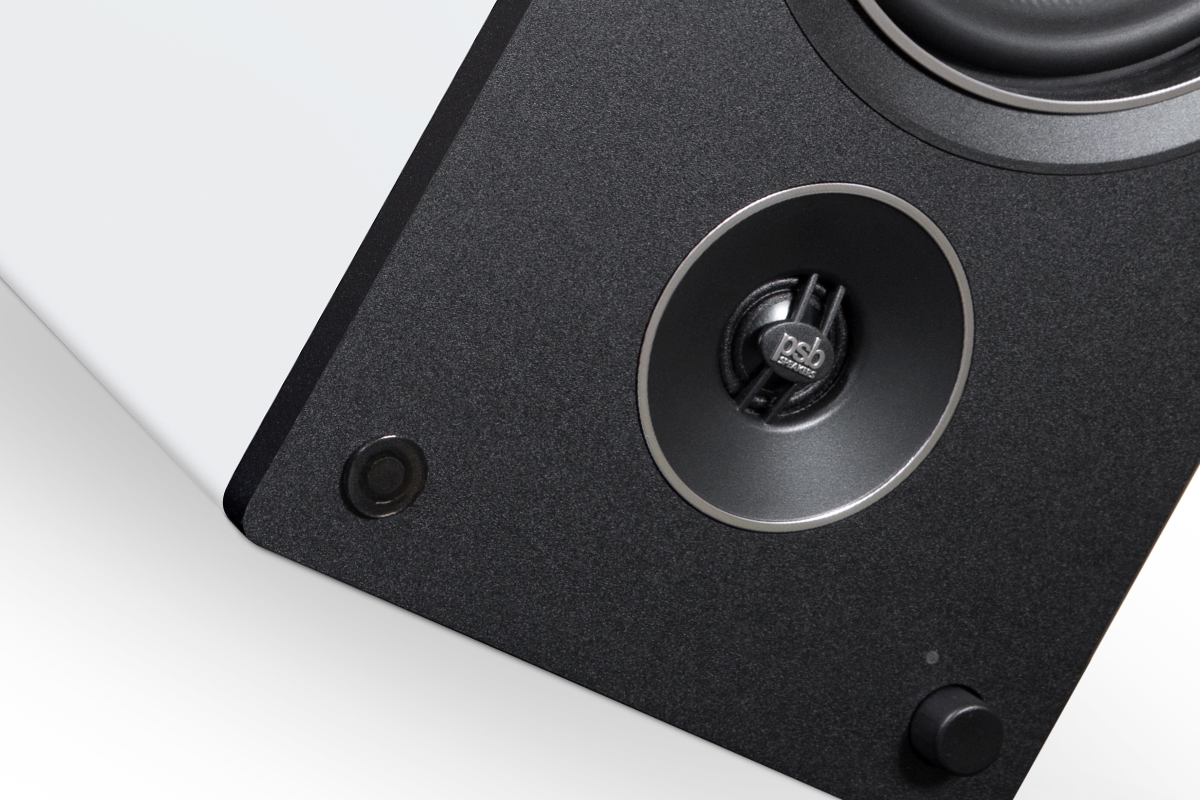
Sent from my MacBook Pro to the AM5s’ USB input, the title track of Flight of the Cosmic Hippo, an album of bluegrass-jazz fusion by Béla Fleck and the Flecktones (16/44.1 FLAC, Warner Bros./Qobuz), showed off the AM5’s surprising bass chops. This track begins with a big, lumbering, two-note riff played on five-string fretless bass guitar by Victor Wooten, and it sounded fantastic through the AM5s -- deep, punchy, and ballsy. Initial transients of plucks were fast and well defined, and the decays were tuneful -- I could appreciate the unique sound of Wooten’s instrument, and how he played with pitch to evoke the awkward gait of the song’s subject.
The AM5s were just as satisfying higher in the audioband. Fleck’s banjo attacks had delicious twang followed by warm, resonant decays; and Howard Levy’s harmonica sounded sweet and saucy.
Wooten plays a long solo in the middle of this track, the first verse on the upper strings, the second on the bottom string, which is tuned to B0, or 31Hz. In that second verse, there’s a whole lot going on between 30 and 40Hz, and it showed the AM5s’ low-frequency limitations. That part of Wooten’s solo sounded big and robust, but also a bit muddy, though not enough to diminish the pleasure of hearing this track through the Alphas.
Wanting to hear how the Alpha AM5s would perform with demanding orchestral music, I cued up The Pines of the Appian Way, the fourth movement of Respighi’s The Pines of Rome, performed by the Sinfonia of London conducted by John Wilson (24/96 FLAC, Chandos/Qobuz).
This tone poem begins quietly and ominously, with a sustained deep organ-pedal note and faint march rhythm on timpani, portraying the approach from afar of victorious Roman legions as the sun rises over the Appian Way. Plaintive woodwinds join in, then distant fanfares played by an off-stage brass choir. The AM5s beautifully reproduced this mysterious opening, throwing a wide, deep soundstage, with precise (though not pinpoint) positioning of individual instruments. Orchestral textures were beautifully transparent, and the timbres of the woodwinds and brasses were commendably natural. The organ-pedal notes and quiet timpani beats were impressively robust, convincingly portraying those distant legions, but were also somewhat muddy and indistinct.
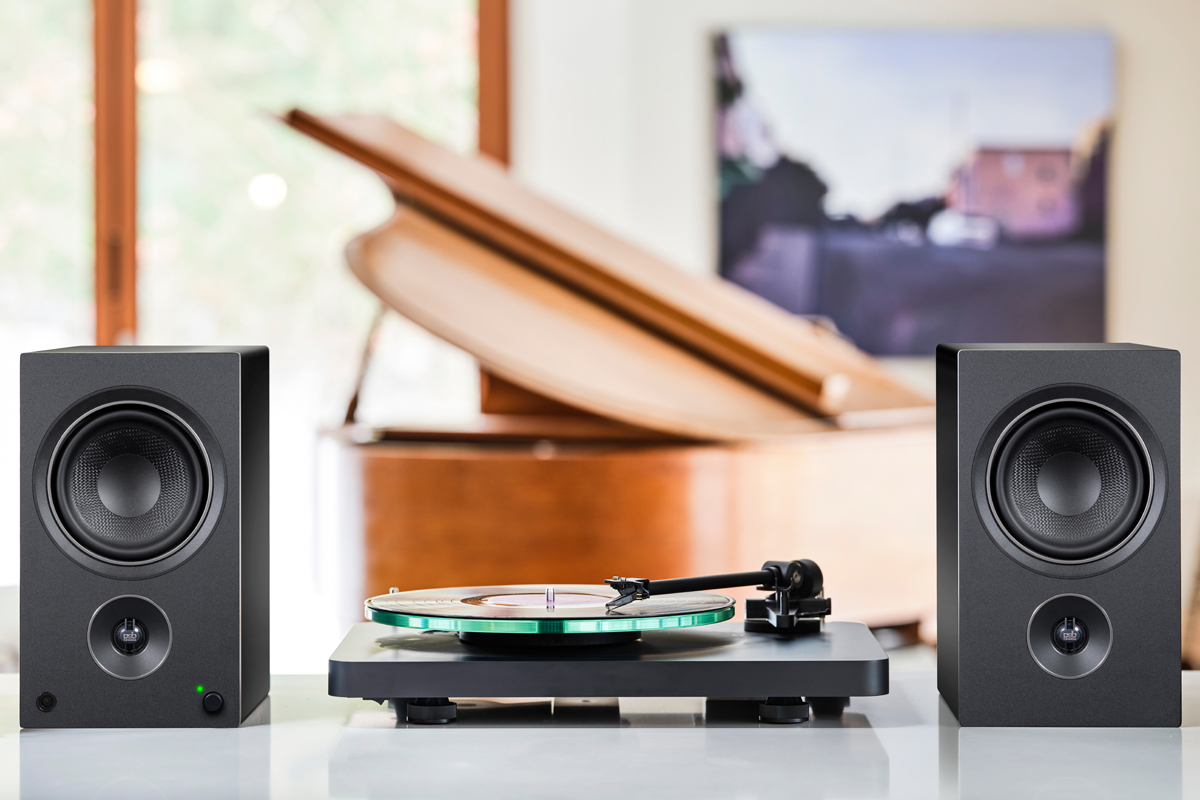
About two minutes in the music builds in intensity, brass blasting out a big martial theme, organ and timpani portraying the ground shaking under the feet of those Roman legions. Here orchestral textures became a bit congested, but with no sign of harshness or distress. The big organ-pedal notes had a droning quality. But let’s be realistic -- for compact, powered, two-way minimonitors with two 5.25″ midrange-woofers and a 50Wpc amp between them, the sound was really impressive.
Movies
Wanting to try the Dialogue and WideSound modes with movies, I connected the primary Alpha AM5 speaker to the optical output of my Vizio D50-D1 50″ HDTV, which is mounted on the wall behind and above the credenza on which the speakers sat, and cued up Blade Runner: The Final Cut in the TV’s Netflix app.
Those DSP features worked almost exactly as advertised. In scenes such as Deckard’s examination of Rachel, Dialogue mode made dialog a little crisper and more intelligible, but added a slightly hollow quality to voices. In the dystopian city scenes and overhead flying scenes, WideSound mode vastly expanded the soundstage -- Vangelis’s musical score extended far beyond the speakers’ outer side panels, and Foley effects reached far out into the room -- while dialog remained tied to the screen. But I again felt some of that pressure in my ears.
Even so, I liked both effects, and for watching a film like Blade Runner, I’d opt for WideSound Plus mode, to enable MaxxDialog and Maxx3D. For music, I’d stick with straight Stereo.
Adding a sub
Along with the Alpha AM5 speakers, PSB supplied an Alpha S8 subwoofer ($449). The Alpha S8’s single 8″ driver is powered by a 150W class-D amp; its specified frequency response is 35-150Hz, ±3dB, and its -10dB point is 32Hz -- 5Hz lower than the AM5’s.
I placed the Alpha S8 on the floor just to the left of my credenza, and connected it to the subwoofer output on the left AM5 speaker with an AmazonBasics subwoofer cable. With the AM5s performing low- and high-pass filtering, I set the S8’s Crossover control to LFE, to ensure that the sub would apply no additional filtering. I used an SPL meter and a 40Hz sinewave test tone to set the S8’s Bass Level control, matching its output to that of the AM5s playing a 200Hz tone. This provided a very good blend of the outputs of mains and sub. And I noticed one strange thing: When the sub was engaged, the AM5s’ Bass control had no effect at all on the sound.
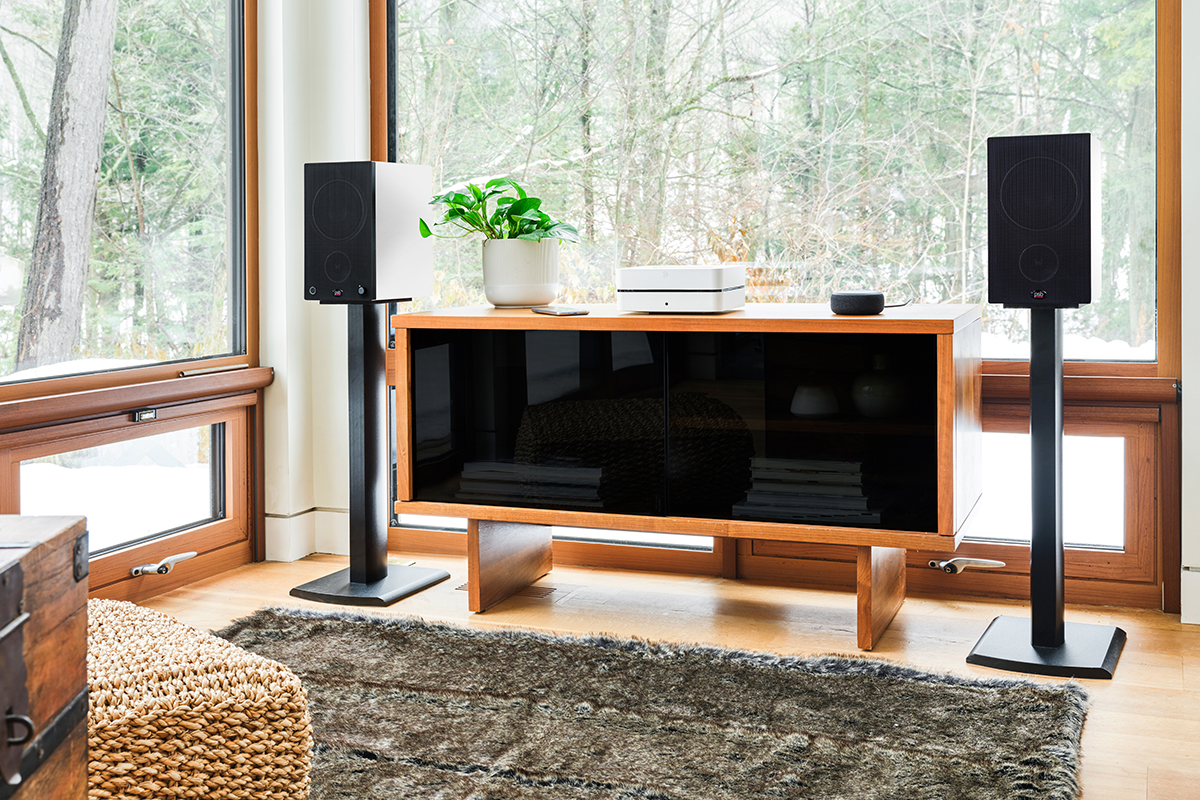
With the sub switched in, the organ-pedal notes in The Pines of the Appian Way were fainter, but more musical and less droning -- I had a clearer sense of air vibrating in a really large space. Similarly, the big kettledrums weren’t as prominent with the sub engaged, but were better defined. Orchestral textures were less congested with the sub active, no doubt because the AM5s no longer had to do the heavy lifting in the lower frequencies.
Switching in the sub also cleaned up Victor Wooten’s fretless-bass riffs in Béla Fleck’s “Flight of the Cosmic Hippo.” Wooten’s instrument sounded leaner and tauter with the sub switched in -- his attacks, even on the bottom strings, were better defined. With the S8 engaged, I was more aware of how Wooten pulled strings to bend notes.
As expected, this exercise showed me that the AM5s benefited by the addition of a subwoofer. The Alpha S8 didn’t make bass more prominent -- in fact, the bass seemed more prominent without the sub. The sub made the bass tighter and better controlled. But my main takeaway was how satisfying the AM5s’ bass was without a sub -- likely a result of Wave’s MaxxBass processing.
Comparison
Comparing the Alpha AM5s to Triangle’s Elara LN01As ($859/pair), right off the bat I heard a difference in background noise. Through both the optical and phono inputs, the PSBs were noticeably quieter than the Triangles. With the Triangles, through the phono input I could hear some faint hiss from my listening chair, 5′ away; and it was quite noticeable from 3′ away.
Beginning with some classic vinyl -- “Fast Car” from Tracy Chapman (LP, Elektra 96 07741) -- the sound was more exciting and dynamic through the PSBs, a little smoother and easier on the ears through the Triangles. Chapman’s dark-toned, impassioned singing was more dramatic through the PSBs, but also a tad edgier. Her steel-strung acoustic guitar had more ringing clarity through the AM5s, but sounded fuller and more rounded through the Elaras. Larry Klein’s electric bass had more punch and definition through the PSBs -- it sounded a little woollier through the Triangles. In the bridge, drummer Denny Fongheiser’s hard-struck snare sounded a little harsh through the AM5s, less so through the Elaras. Dynamics were slightly more compressed through the Triangles, but the PSBs sounded a bit harder at high volumes.
Similarly, the LP edition of Van Morrison’s “Into the Mystic” sounded more compressed through the Triangles, Schroer’s and Tilton’s saxes didn’t have as much drive, and Klingberg’s bass wasn’t as well defined. Through the PSBs, Morrison’s voice had a slightly hard edge at high volumes that I didn’t hear through the Triangles, but the PSBs more clearly tracked changes in volume in his singing -- the Triangles were a bit more compressed. In the instrumental choruses, individual instruments were better differentiated through the AM5s.
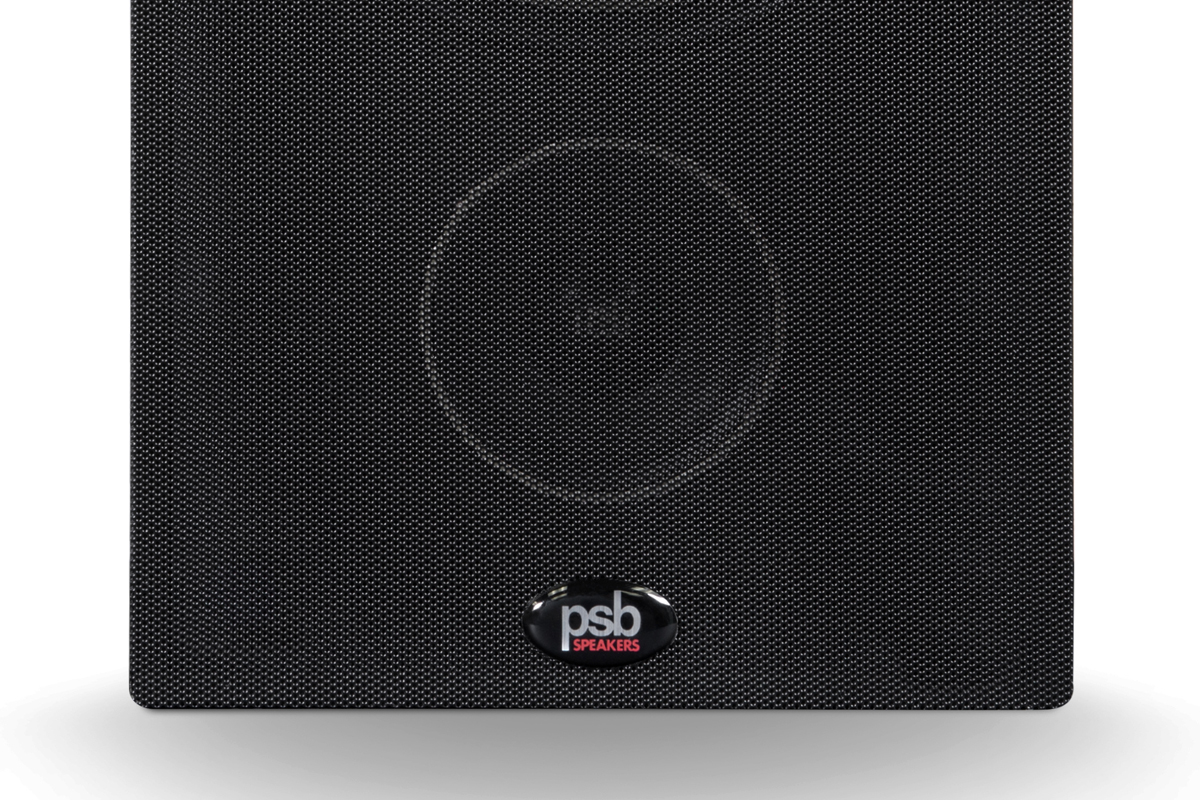
I connected my MacBook Pro to the Triangle’s TosLink input and compared it with playback from the MacBook through the PSB’s USB input. In the mysterious opening to Respighi’s The Pines of the Appian Way, the Elaras sounded a little more transparent. The organ-pedal note had more growl, and less of an indistinct drone. The brasses had more burnished tone through the Triangles, which I really enjoyed. But as the intensity built, the advantage shifted to the PSBs. Orchestral textures were more opaque through the Triangles, dynamics more compressed. However, the big timpani strokes in the finale had better definition through the Triangles.
In “The Angel of Doubt,” from the Punch Brothers’ All Ashore (24/96 FLAC, Nonesuch), the attacks of Chris Thile’s mandolin and Noam Pikelny’s banjo sounded faster through the PSBs than through the Triangles, but weren’t spotlit or edgy. Paul Kowert’s double bass was more robust and better controlled through the PSBs, as were Chris Eldridge’s muted acoustic-guitar chords -- the latter hit harder through the AM5s than through the Elaras. I also preferred the way the PSBs rendered Thile’s voice -- I heard more details in his breathing and word-painting. Through the Triangles, his voice had a slightly nasal coloration that I didn’t experience with the PSBs.
Conclusion
PSB’s Alpha speaker models have been acclaimed for their value and performance ever since the first generation appeared, in 1991. Now, almost 30 years later, the new powered Alphas take those qualities to another level.
In my view, PSB’s Alpha AM5 is a poster child for the value proposition of powered speakers. When we spoke in late October, Paul Barton explained one of the key benefits of powered and active speakers: “It’s a closed system, so it’s much more optimized than an open system.” In powered speakers like the Alpha AM5, the amplifier is designed specifically for those speakers.
As countless reviews have attested, the Alpha P5 is a killer speaker for $399/pair. For $200 more, the Alpha AM5 adds a built-in amplifier tailor-made for it, with a very capable phono stage, a USB DAC, Bluetooth, and useful DSP that allows the AM5 to transcend the limitations of its size and power output. The math is compelling: for $599, you get a dynamite system with everything you need to enjoy music and movies -- just add a source or two. Enthusiastically recommended.
. . . Gordon Brockhouse
Associated Equipment
- Sources -- LG G7 ThinQ smartphone, Apple MacBook Pro computer (early 2015) running Audirvana Plus 3.2.20, Pro-Ject Debut Carbon turntable with Ortofon 2M Red cartridge
- Powered loudspeakers -- Triangle Elara LN01A
- Display -- Vizio D50-D1
- Subwoofer -- PSB Alpha S8
- Speaker stands -- IsoAcoustics ISO-155 (desktop)
- Network -- Google Wifi four-node mesh network
PSB Alpha AM5 Powered Loudspeakers
Price: $599 USD per pair.
Warranty (parts and labor): Five years, drivers; one year, electronics.
PSB Speakers
633 Granite Court
Pickering, Ontario L1W 3K1
Canada
Phone: (905) 831-6555
Fax: (905) 831-6936
Website: www.psbspeakers.com
